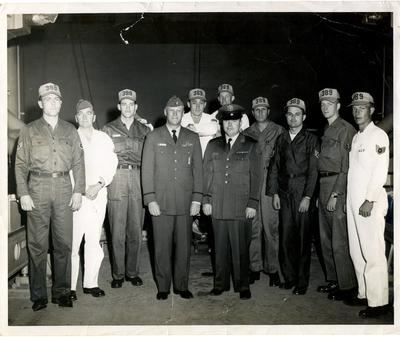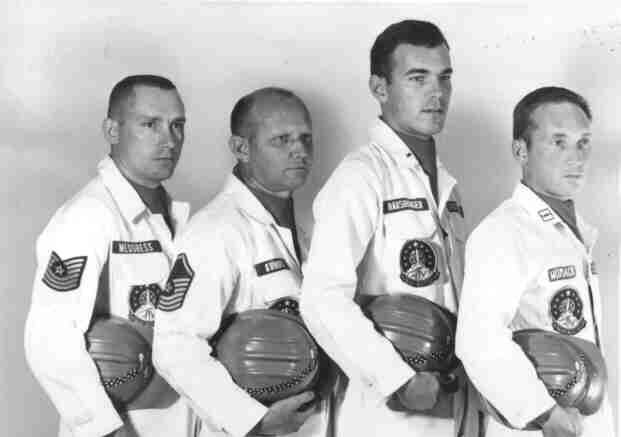All Those Other Topics
While the AAFM Online Museum has galleries for almost every past and current Air Force missile system, there are a lot of topics that relate to more than one system, to the people involved with missiles or across the board. In this gallery, we cover some of those topics, including badges and patches, uniforms, transport, missile reunion and social organizations and the Association of Air Force Missieeers, itself. You will find separate pages for some of the topics, while others are covered here.
Transporting Missiles and Missileers
Standardization, Evaluation and Inspection
Airborne Launch Control System
Uniforms In the early days of missiles, Missileers were usually found in whatever the standard work or utility uniform was at that time. By the late 1950s, most enlisted members were wearing the standard two piece olive drab fatigue uniform, while most officers wore what was then called Class A or Class B dress uniforms, either the summer or winter version. Fatigues might be short sleeved in the summer, and shirts worn untucked, and summer Class Bs were called Shade 505 or 1505, light tan colored short sleeve shirts with similar colored pants. It is not unusual to find photographs of noncommissioned officers sitting at consoles in launch control centers also in various dress uniforms. Officers seldom wore utility uniforms, and flight suits were reserved for only those on flight status. As the missile programs matured, standard white coveralls became the common uniform for missile crewmembers and some maintenance technicians. These coveralls were similar to civilian painter's coveralls, were laundered and heavily starched by the base laundry, and not very comfortable. One would occasionally see crewmembers in the missile procedures trainer in dress uniforms instead of the coveralls. In late 1957, the Air Force replaced the white coveralls with a two piece utility uniform, similar to the olive drab fatigues, but dark blue in color. Some of us discovered a Sears work uniform that was inexpensive and more comfortable, and was permanent press, so we began wearing those. The two piece blues were replaced by a one-piece uniform in the late 1980s. The one-piece blue uniform was similar to an Air Force flight suit, but was not fire retardant. In 2000, this uniform was replaced with the standard Air Force flight suit, the "green bag." At the same time, missile operators were authorized the wear of the leather flight jacket. Maintainers have worn the standard utility uniform and continue to do so. That uniform has changed over the years, from the standard fatigues, to the Battle Dress Uniform, to more recent versions . There have been and are some special purpose uniforms for specific tasks. One of the big differences in the Air Force overall is that, before the early 1990s, dress blue uniforms were worn by all but those who worked in the field or flight line. With the Gulf Wars, that changed, so that everyone, office workers incluoded, wore flight suits or battle dress uniform day to day, seldom wearing dress unifomrms. Photos - Top right, a mix of uniforms on an early Atlas crew, ight - a four man Titan II crew in whites, below, Minuteman maintenance in battle dress uniforms. |
|




.jpg)
